
The Carthusians, also known as the Order of Carthusians, are a Latin enclosed religious order of the Catholic Church. The order was founded by Bruno of Cologne in 1084 and includes both monks and nuns. The order has its own rule, called the Statutes, and their life combines both eremitical and cenobitic monasticism. The motto of the Carthusians is Stat crux dum volvitur orbis, Latin for "The Cross is steady while the world turns." The Carthusians retain a unique form of liturgy known as the Carthusian Rite.

The London Charterhouse is a historic complex of buildings in Farringdon, London, dating back to the 14th century. It occupies land to the north of Charterhouse Square, and lies within the London Borough of Islington. It was originally built a Carthusian priory, founded in 1371 on the site of a Black Death burial ground. Following the priory's dissolution in 1537, it was rebuilt from 1545 onwards to become one of the great courtyard houses of Tudor London. In 1611, the property was bought by Thomas Sutton, a businessman and "the wealthiest commoner in England", who established a school for the young and an almshouse for the old. The almshouse remains in occupation today, while the school was re-located in 1872 to Godalming, Surrey.
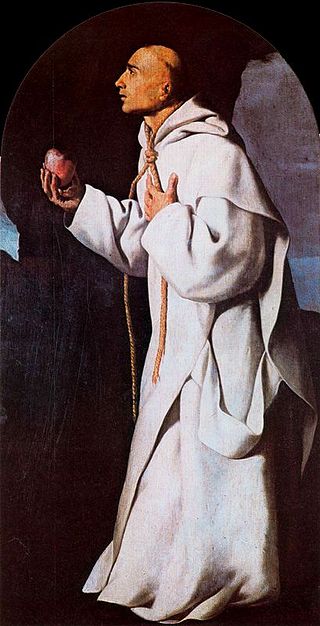
John Houghton was Catholic priest of the Carthusian order and the first martyr to die as a result of the Act of Supremacy by King Henry VIII of England. He was also the first of the Carthusians to die as a martyr. As one of the Carthusian Martyrs of London he is among the Forty Martyrs of England and Wales.
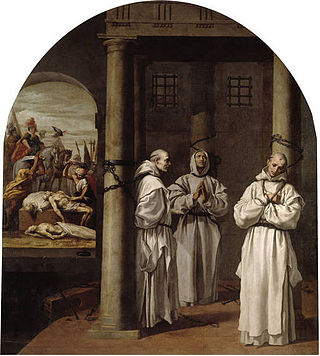
The Carthusian Martyrs of London were the monks of the London Charterhouse, the monastery of the Carthusian Order in the City of London who were put to death by the English state in a period lasting from the 4 May 1535 until the 20 September 1537. The method of execution was hanging, disembowelling while still alive and then quartering. Others were imprisoned and left to starve to death. The group also includes two monks who were brought to that house from the Charterhouses of Beauvale and Axholme and similarly dealt with. The total was 18 men, all of whom have been formally recognized by the Catholic Church as martyrs.

Beauvale Priory was a Carthusian monastery in Beauvale, Nottinghamshire. It is a scheduled ancient monument.

Nicholas Love, also known as Nicholas Luff, was first a Benedictine and then a Carthusian monk in medieval England, and became the first prior of Mount Grace charterhouse in Yorkshire. He was the translator and reviser of a popular devotional treatise which was used by the Church authorities to counter the teaching of John Wycliffe. In his later years he convinced Henry V of England to attempt to reform Benedictine monasticism in England, but died before measures could be taken.
Axholme Charterhouse or Axholme Priory, also Melwood Priory or Low Melwood Priory, North Lincolnshire, is one of the ten medieval Carthusian houses (charterhouses) in England. It was established in 1397/1398 by Thomas Mowbray, Earl of Nottingham and later Duke of Norfolk. The house was centred on a pre-existing chapel on the present Low Melwood Farm, between Owston Ferry and Epworth in the Isle of Axholme, which according to a papal bull of 1398 "was called anciently the Priory of the Wood".

Carisbrooke Priory was an alien priory, a dependency of Lyre Abbey in Normandy. The priory was situated on rising ground on the outskirts of Carisbrooke close to Newport on the Isle of Wight. This priory was dissolved in around 1415.
Loders Priory was a priory in Loders, Dorset, England.
Hinckley Priory was a small medieval monastic house in the town of Hinckley, Leicestershire, England.
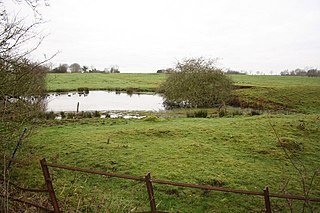
Minting Priory was a priory in Minting, Lincolnshire, England.
Begar Priory was an alien priory near Richmond, believed to be in Moulton, North Yorkshire, England where old buildings known as "the Cell" were located. The Carthusian monks who lived at Begar in the time of Henry III of England belonged to the Priory of Begare in Brittany. After suppression the house was granted variously by different kings to first the chantry of St. Ann at Thirsk, then to Eton College, then to Mount Grace Priory, and then back to Eton College again.
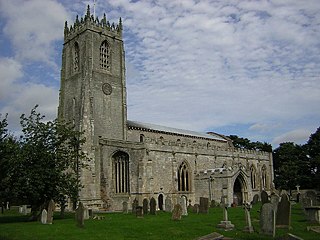
Blyth Priory was a priory in Nottinghamshire, England, dedicated to St Mary the Virgin.

Great Bricett Priory was a medieval monastic house in Great Bricett in Suffolk, England, the chapel of which is now in use as the Church of England parish church of St Mary and St Lawrence. Ralph FitzBrian and Emma his wife, about the year 1110, founded a priory for Austin canons at Bricett, which was dedicated to the honour of St Leonard. The foundation charter endowed the priory with the tithes of Bricett and of 'Losa' with its chapel, a moiety of the church of 'Stepla,' and the associated church of Stangate, Essex, in addition to various plots of land in the vicinity. The founder also gave to the canons a large garden on the south of the monastery and a smaller one on the east, and he ordained that whenever he was in Suffolk the canons were to act as his chaplains and to receive a tithe of his bread and beer. The priory of Bricett was claimed, early in the thirteenth century, as pertaining to the monastery of Nobiliac, in the diocese of Limoges and the Duchy of Berry. This claim was resisted, but in 1295 an agreement was arrived at favourable to the foreign house, whereby Bricett became an alien priory; this composition was renewed and confirmed by the Bishop of Norwich in the chapter house of Bricett, on 16 July 1310. In a long list of royal protections to religious houses in 1295, in return for bestowing on the king a tithe of their income, the priory of Bricett is described as a cell to the priory of 'Noblac in Lymoche's'.
Sheen Friary later also known as Richmond Priory (1414-1539) was a friary in Surrey, England, restored as a national gathering of Carthusians by Maurice Chauncy at Sheen under Mary I of England during part of her reign from 1553 to 1558.

Monks Kirby Priory was a Benedictine priory established in 1077 in Monks Kirby, Warwickshire, England. The priory was suppressed in 1415 when its estates and revenues were given to the Carthusian priory of Axholme in Lincolnshire, in whose possession they continued until the Reformation. Remains of the priory form part of Monks Kirby village church today.
Warmington Priory was a Benedictine priory or more probably a cell in Warmington, Warwickshire, England. It was apparently founded by the monks of Préaux Abbey in Normandy after Henry de Newburgh, earl of Warwick, gave them his lands in Warmington in the reign of Henry I of England. Whatever its initial status, by the 14th century it was a cell of Toft Monks Priory in Norfolk, which similarly belonged to Préaux Abbey. After the dissolution of the alien priories by Henry V it was granted in 1428 to the Carthusians of Witham Charterhouse in Somerset.
Wootton Wawen Priory was an alien priory in Wootton Wawen, Warwickshire, England.
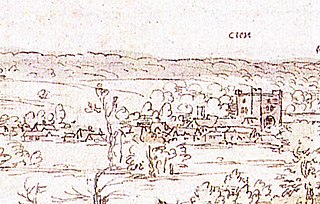
Sheen Priory in Sheen, now Richmond, London, was a Carthusian monastery founded in 1414 within the royal manor of Sheen, on the south bank of the Thames, upstream and approximately 9 miles southwest of the Palace of Westminster. It was built on a site approximately half a mile to the north of Sheen Palace, which itself also occupied a riverside site, that today lies between Richmond Green and the River Thames.
John Ingleby (1434–1499) was Bishop of Llandaff.















